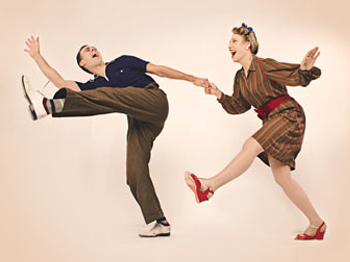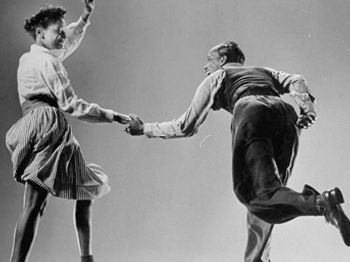A Timeline of Swing Dance – African-American Roots


Swing dancing came into existence while there was still slavery in the United States. The African people were brought to America and forced into slavery in an alien country. They brought with them a huge part of their culture. This included food, dance forms, clothing and other such practices. The African people also entertained themselves during the swing era and created their own dance forms. Most of the street style dances that have originated in the USA have African roots. With time, the days of slavery ended and the African community was given equal rights in society. Many African American dancers made huge names for themselves and became famous performers. They became national favourites and the dance forms like Cakewalk, Charleston and Black Bottom emerged.
When the Lindy Hop started becoming famous, people began to notice some African dance characters in it. Although it was danced in a non-African-American style and with an upright posture, unlike the African forms which emphasize a lot of swaying of the body, there were many parts of it that gave it an African impression.
Later, in the mid 1930’s, Frank Manning started introducing a little angular posture to the dance form. This posture started being used in all the ballrooms, and unknowingly the dance form was bought closer to its African roots.
Some of the characteristics of the African dance forms that are seen in the swing dance form are as follows:
Movement of The Body Parts
Unlike the European and American dance forms that are usually performed in a stiff manner and only rely on the movement of the hands and legs, the African dance form bought the movement of other body parts into swing dancing, like the waist and the hips or the bending of the torso and arms.
Orientation
The English form of dancing was mostly done in a form that required the body to be kept straight without much bending of the body. In contrast to that, the African style of dancing had the person’s orientation towards the ground with a slightly bent torso. The stance of the swing dance is closer to African posture although it also has the English upright posture to it.
Improvisation
Traditional English dance forms were the same for the centuries, and not many improvisations were done on them. They were performed in a certain ways with a certain set of rules. In the case of the African dancing, improvisation is the key. The dancers do not stick to one rule and there are very little set parameters to dancing. This was brought into swing dancing.
Swing dancing has more flexibility of the rules, and there is a lot of scope for improvisation, improvement and the addition of new steps and tricks.

Formations
The formations and circles are a common features for both American and African dance forms. American dance forms also involve the formation of groups and circles, although with the African forms, the formations are done in a more flexible manner. The English and American dance forms are more rule-based and stiff. The various formations that are made during the swing dance forms are an amalgamation of both cultures.
Rhythm
African music is not made by one instrument, or does not have just one rhythm. It has several rhythms created by several instruments at the same time. The different beats give the dancer a choice to move his body parts to different beats. The music that swing dancing is done with is also based on different beats. Music like rock and roll and jazz were incorporated into each other to form the perfect music for these dance forms.
Percussion
Certain steps including clapping and foot tapping or thumping have come from the African culture. There are a lot of percussive instruments that were developed by the enslaved communities from Africa.
Competitions
In the African culture, competition through dancing is very famous. They bought this culture to the American community and the competitions are held for various swing dance events all over the world.
